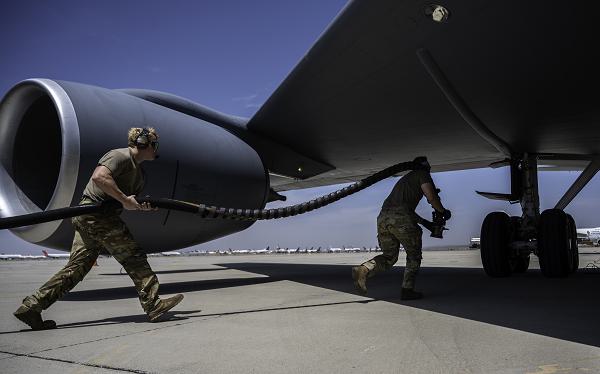
Victorville, California. (August 17, 2024): “Hot-pit refueling” is an extremely dangerous yet essential requirement to keep America’s air fleets in the air. In this photo by Technical Sergeant Alexander Cook, Air Force Staff Sergeant Craig Oliver, left, with the 6th Aircraft Maintenance Squadron and Staff Sergeant Jacob Ebberts, a 52nd Logistics Readiness Squadron petroleum, oils, and lubricants technician, hot-pit refuel a KC-135 Stratotanker.
Hot-pit refueling involves supplying an aircraft with fuel while its engines are running to expedite the turnaround time needed to relaunch the aircraft. In a war, the ability to rapidly refuel airplanes and get them back into the sky is paramount. In the past, an aircraft would typically spend from four to six hours cooling down in a hangar before being refueled. With hot-pit refueling, aircraft can be turned around in sixty minutes or less, which allows the Air Force to generate combat sorties faster.
While fueling planes with their engines running cuts down time, the process is not without its dangers. The hazards are greatest when highly flammable fuels are being dispensed due to the danger of sparks from static electricity or from friction between metals from fueling equipment. Any negligence or oversight can have catastrophic consequences, not only impacting the individuals involved but potentially endangering the lives of passengers and crew members. This is why refueling specialists reduce the risk of ignition by limiting spillage and ensuring proper ventilation during the operation.
Despite the dangers, hot-pit refueling will soon become standard procedure under the Air Force’s new Agile Combat Employment concept that demands quicker turnaround of aircraft in combat.


